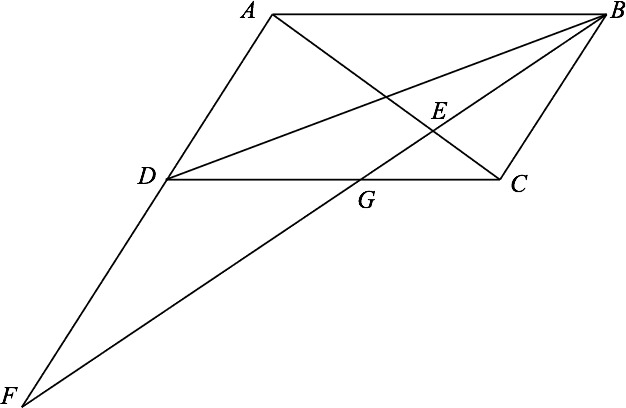Given a parallelogram with its diagonals drawn, suppose a line through intersects at , at , and line extended at . Observe that triangle is similar to triangle and show that is the geometric mean of and . Interested? See how this looks in a drawing.
Solution
We want , i.e. , i.e..
We tease out some similar triangles to make this happen. There are many congruent angles to work with. Find them and use them!
First, , so .
Then, , so .
So , and there we are.
Hmm, what if ?
